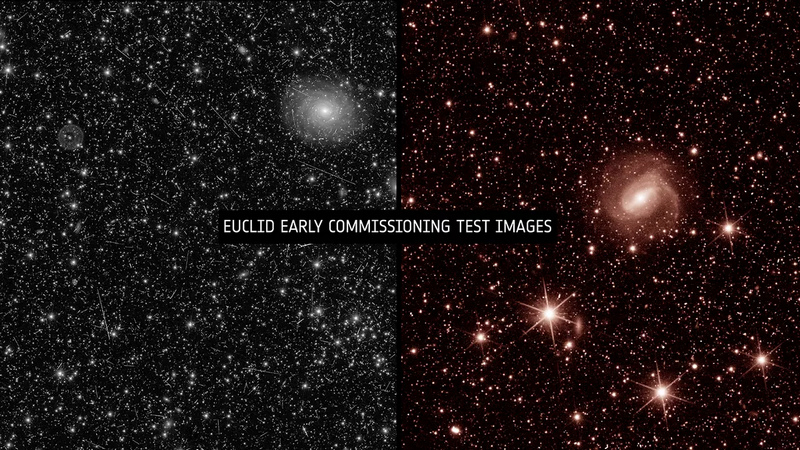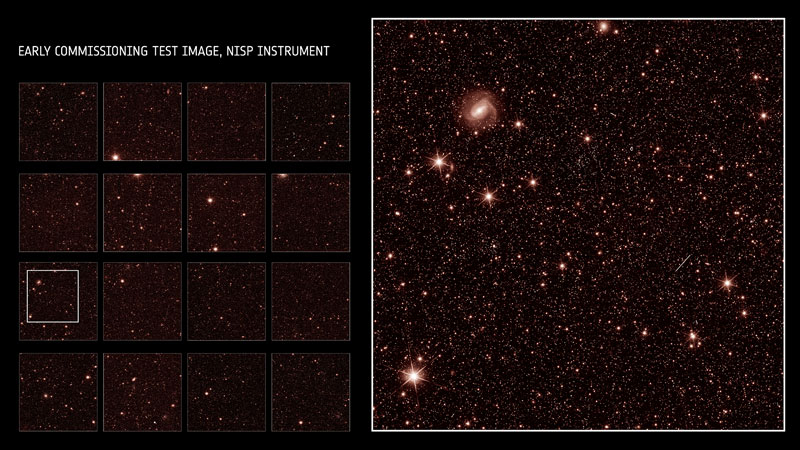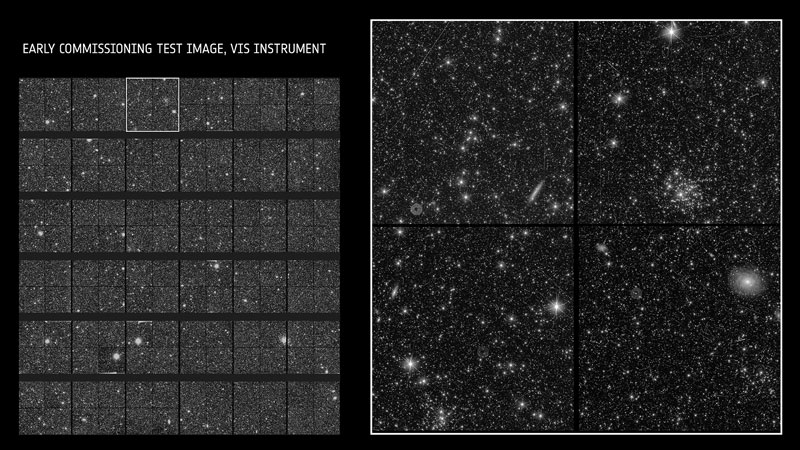
Euclid telescope takes first photos: A flaw found in it can lead to failure of entire project (photo)
The European Space Agency's (ESA) Euclid telescope recently took the first test photos. However, scientists discovered a flaw in the telescope that could lead to the failure of the entire project.
This space telescope was launched a month ago with the main mission of searching for traces of dark matter and dark energy. However, the first images taken by the device showed not something that would help scientists better understand dark matter, but a flaw: sunlight that could seriously disrupt the device's performance. It was found that the telescope receives sunlight due to a small opening in the body, through which side light enters.

Still, despite the problem, the Euclid telescope continues its mission.
After being launched into space by SpaceX Falcon 9 rocket on July 1 of this year, the device reached the Lagrange point L2, 1.5 million kilometers from Earth. This became the main site of the telescope's work, the James Webb telescope is also located here.

Euclid's main task is to make a three-dimensional map of galaxies at a depth of 10 billion light years. It will determine not only the distance of galaxies, but also study their shape, composition, velocity and vector of motion. The Euclid program plans to map 30% of the universe.

The first test shots of the device showed that it works well despite the identified flaw. However, acquiring images without penetrating sidelight would require the telescope to be positioned specifically in space, which could result in excessive fuel consumption and shorten the duration of the science program. However, scientists believe that even such an outcome is better than a complete failure of the mission.
Accurate measurements of the position, velocity, size, and mass of galaxies across such a large area of space will provide very precise data on the characteristics of dark matter and dark energy. The first of them is responsible for the formation and strengthening of galaxies, and the second for accelerating their movement through space. These tasks make the Euclid telescope a true hunter of dark matter, despite the fact that it is impossible to see it directly.
The first images obtained confirmed that the equipment of the telescope has high potential. It captures the sky at about a quarter the size of a full moon. One photo is taken in the optical (visible) range and the other in the near-infrared range. The optical range allows determining the shape of galaxies, and the infrared allows determining their composition and distance to the galaxies.
Over the next two months, the telescope will go through the instrument adjustment and calibration procedure, and only then will it begin full scientific work. A team of scientists and engineers hope the Euclid telescope will yield valuable and unique data on the mysterious dark matter and dark energy in our universe.
- Related News
- Wheel of Death: new method will help astronauts stay fit in low gravity
- Due to anomalies of Orion spacecraft, lunar exploration program may be delayed for years։ NASA
- TAO Observatory: World's highest telescope to study evolution of galaxies and exoplanets
- Powerful M9.5 solar flare causes radio blackout in Pacific Ocean
- What will happen to the Earth if the Moon disappears?
- Key to conquering the Red Planet: Why is NASA studying solar storms on Mars?
- Most read
month
week
day
- Digital Julfa Network is launching a pan-Armenian centre in the metaverse, on the Fastexverse virtual platform 876
- Sparkles: Boston Dynamics unveils a furry robot dog that can dance (video) 783
- Xiaomi unveils exclusive Redmi Note 13 Pro+ dedicated to Messi and Argentina national team 751
- Is there a ninth planet in the solar system? Scientists find new evidence 660
- Smartphone catches fire in child's hand in Russia 653
- What will happen to the Earth if the Moon disappears? 629
- How to understand how protected a smartphone is from water and dust? 628
- World's largest 3D printer was created in USL It prints 29 meter-long structures 618
- New iPad Pro to receive M4 chip and to be more powerful than Apple computers 603
- iPhone 16 may get colored matte glass back panel, 7 colors 601
- Archive
